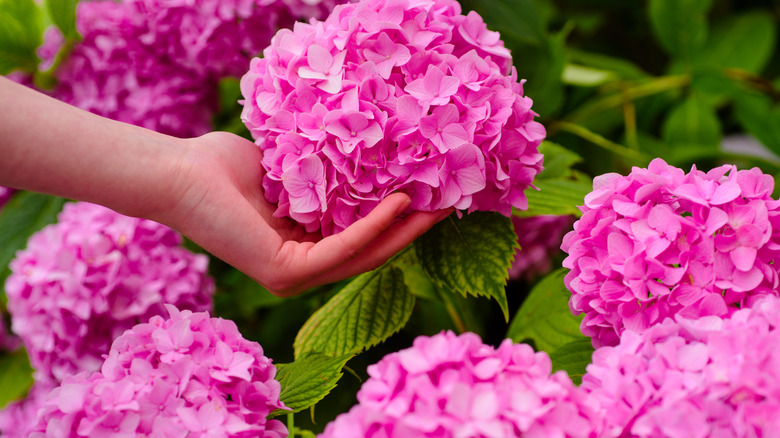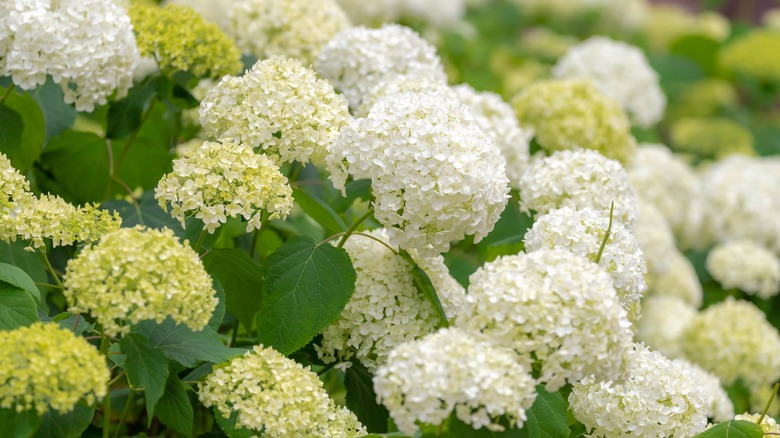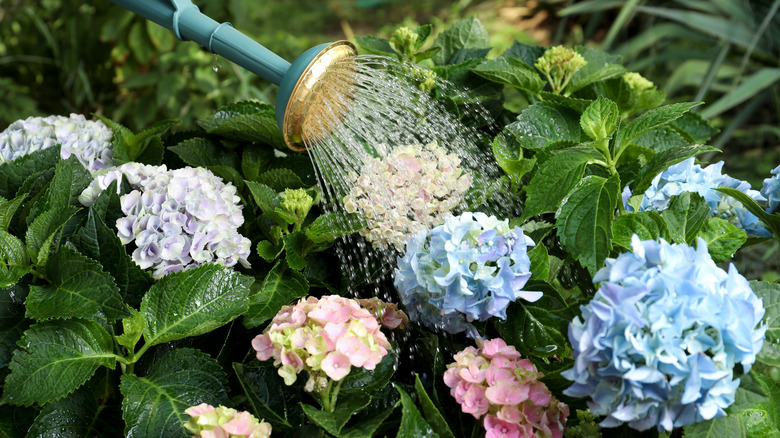What To Consider Before Using Tomorite To Help Your Hydrangeas Grow
While relatively straightforward to tend to and easy to grow, hydrangeas may struggle to bloom for a variety of reasons, including undesirable weather temperatures, not enough sunlight reaching the foliage, or the shrub hasn't been pruned enough. It's also possible that you need to fertilize your hydrangeas as they are simply not getting enough of the vital nutrients they need to flourish. One way to remedy that particular issue is to consider using Tomorite to encourage new growth, but only if you've considered certain factors such as the age of your hydrangeas, the timing of application, and the amount that should be used.
Tomorite is a tomato feed that is often used on many other crops and plants and produces crucial nutrients most plants need to thrive. It differs from typical fertilizers in that it contains an unbalanced ratio of nitrogen, phosphorus, and potassium — having a particularly increased potassium level. Hydrangeas and many flowering plants need a lot of potassium to produce large, healthy blossoms. While using Tomorite seems like the perfect solution, here's a deeper dive into what to consider before utilizing this solution for your hydrangeas.
What to consider when using Tomorite on hydrangeas
When considering using Tomorite on your hydrangea plants, it's important to note that the fertilizer should be applied to mature plants that are struggling to produce flowers during the season. Applying the fertilizer to starter plants that haven't yet grown to be well-established won't make a beneficial difference and will likely lead to imbalanced development. Additionally, feeding your hydrangeas outside of the growing season will pose issues as the plant begins to transition into dormancy for the approaching colder months.
You should apply Tomorite in the spring when the perennial is most active and at an ideal time to promote the most success. Be sure to take into consideration what time of day you are applying Tomorite to your shrubs. A later application once the afternoon has set in will give the plant plenty of time to soak up those nutrients and produce optimal results.
Be careful of fertilizer burn
Although Tomorite has many positive effects on hydrangeas, taking careful notice of how much is applied is essential, or you risk doing more harm than good. As with any fertilizer, you should always read the directions and recommended measurements and be sure to dilute with water if needed. Fertilizer burn is nearly impossible to reverse, with signs including wilting and browning leaves, root rot, and stunted growth.
The tomato feed is also slightly acidic, which can decrease the pH in alkaline soils. While this won't necessarily hurt your hydrangea plants, as they can grow in acidic or neutral soils, the resulting alterations to the soil's pH balance may change the color of your hydrangeas. Hydrangeas will typically begin winding down for the season as August approaches and autumn breezes in, so it'll be necessary to cease applying the tomato feed before the perennial becomes dormant.


